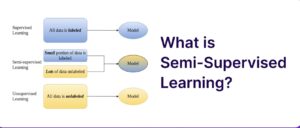“To live effectively is to live with adequate information. Thus, communication and control belong to the essence of man’s inner life, even as they belong to his life in society.” ~ Norbert Wiener
The initial challenge: Communication turns to chaos
The Partnership
In May 2024, I joined forces with the Aged Rights Advocacy Service (Click Here), an organization dedicated to empowering older adults. They saw Microsoft SharePoint as the central system driving their operations: a platform ready to refine their workflows and enhance productivity.
- Expectation: SharePoint was envisioned as the brain orchestrating their digital processes.
- Reality: The MIS, acting like an outdated component, failed to deliver essential data for efficient functioning.
- Outcome: A tool meant to streamline communication instead exposed system fragmentation.
When Systems Fail to Self-Regulate
Stepping into ARAS’s office felt like entering a grand stage set for success, yet no one knew their role. SharePoint, the skilled digital coordinator, observed and was prepared to orchestrate the scene.
Key observations:
- Silence and inefficiency: SharePoint sensed the gaps but lacked the response from MIS to close them.
- Stagnant processes: Files and communications within the system remained unmoved, awaiting activation.
A Bridge left unbuilt
The Vision vs. Reality
Launching SharePoint was like scripting the perfect play, expecting results from the first scene.
- Initial Promise: System alignment and workflow efficiency were in sight.
- Hindrance: Without MIS integration, SharePoint’s role became a solo act instead of part of a collaborative performance.
- Metaphor: The bridge to productivity stood incomplete, pausing mid-process.
The Impact: Lost opportunities
Consequences of inaction
The MIS was an unresponsive component in a process that needed fluidity. This resulted in:
- Ineffective data flow: Essential information failed to circulate.
- Missed potential: ARAS was left with thoughts like, “What progress might we have achieved?”
Reflection:
- Staying static comes at a cost. Sometimes, recognizing that inertia is the first step toward change.
The strategic solution: Wisdom amidst chaos
The shift in perspective
The solution was not just technical; it was strategic. Integrated systems must collaborate for optimal performance.
Core takeaways:
- Conceptual reminder: Systems need to interact like elements in a cohesive design.
- Goal: Transform fragmented processes into streamlined operations.
The transformation: Smart integration
The Turning Point
Finally, the MIS responded, signalling the return of operational flow. SharePoint, the experienced coordinator, recognized the shift.
What happened next:
- Activated feedback loops: Data began to circulate seamlessly.
- Unified direction: The workflow found its rhythm, creating harmony.
Reflecting values and achievements
More than a technical win
This was a strategic triumph that turned SharePoint into a driving force ensuring cohesive, impactful processes.
Key Outcomes:
- Precision: Each action became deliberate and effective.
- Clear mission: ARAS’s vision was now optimized and aligned.
Don’t miss the opportunity: Your call to action
Recognizing the Stakes
I am guessing you haven’t gotten around to making that decision yet. Each day your systems remain disconnected is a day:
- Creativity stays backstage
- Potential goes untapped
- Progress is delayed
Imagine This:
- Your efforts continuing to go unnoticed, your team’s capabilities remaining underutilized.
Take Action Today:
- Don’t let your team’s greatest work remain unsung. I bet you are a bit like me—driven to make impactful changes but cautious about the first step.
- How open-minded are you to reaching out to us for more insights and learning how to take that step?
Next Steps for System Optimization
- Explore our training course: Dive into strategies on Cybernetic and AI-Driven Communication Management(Click Here).
- Consider one-on-one consultancy: Because there’s no way to convey all of this in a blog post, I’m offering tailored consultancy to guide you(Click Here).
further books :








